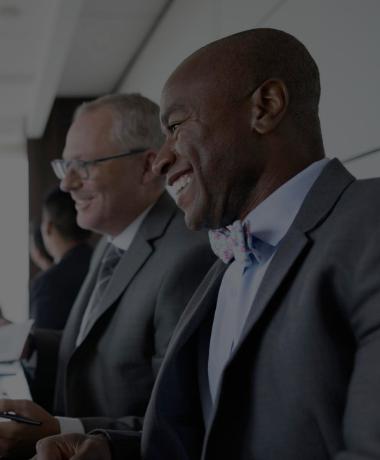Story Highlights
- COVID-19 disrupted traditional employee training for health systems
- Healthcare systems have made huge shifts to virtual learning only
- Live instructor-led virtual learning stands out in its effectiveness
The pandemic changed the way health systems think about learning.
Before, virtual learning models -- either e-learning modules or instructor-led online training -- were met with some indifference. But as the number of COVID-19 patients surged, hospitals had no choice but to use online resources for employees from onboarding and PPE instruction to dealing with burnout and working remotely.
In many health systems, the experience created more questions than answers.
Tailored Microlearning Rises to the Top
Recently, Gallup convened a series of Chief Learning Officer roundtables limited to major U.S. healthcare systems. Some Chief Learning Officers (CLOs) said their organizations used virtual instructor-led training (VILT) to provide whole care support programs with on-demand, virtual face-to-face, personal, and professional coaching.
Some developed online recommendation engines to help employees with mental health issues and relied on peer-to-peer development of virtual resources. Digital orientations, webinars, virtual get-togethers and e-learnings are becoming more common, too.
Those learning solutions met some needs, but many CLOs admitted that pre-COVID-19 content models aren't sufficient anymore.
Learners need microlearning that delivers short, customized content, and managers need content around leadership, caregiving, learning journeys, digital executive coaching, and engagement. Such bespoke learning modules are scarce.
A Look at Virtual Instructor-Led Training
Even when learning modules are available, CLOs still have to contend with skepticism about VILT as the optimal mechanism of delivering clinical education. And as CLOs are not responsible for clinical education in most healthcare systems, they have limited opportunities to show clinical educators the efficacy of virtual instruction models
That's especially frustrating, as VILT can lower costs as well as rapidly scale learning. And online learning democratizes content ownership -- clinical educators and development functions provide content ownership and oversight and are increasingly partnering with CLOs to move to a virtual learning approach.
CLOs have learned that virtual instructors need a specialized skill set. A VILT learner's primary interface is a small screen where critical content is shared, and if instructors don't know how to hold participants' attention, it can wander. In-person trainers have the advantage of movement and non-verbal cues that a VL instructor does not have.
A Virtual Learning Success Story: Bon Secours Mercy Health
One hospital system, Bon Secours Mercy Health, has found solutions to these issues through experience. The 60,000-employee, not-for-profit Catholic healthcare ministry covers 50 hospitals in seven states and Ireland, and it has been using virtual instructor-led training (VILT) for years.
Its learning environment is available on- and off-site and allows employees to consume training in smaller chunks, immediately apply their learnings and facilitate supervisor conversations about the learnings.
Learners need microlearning that delivers short, customized content, and managers need content around leadership, caregiving, learning journeys, digital executive coaching, and engagement.
Learners find these live interactive lessons especially engaging, Bon Secours Mercy Health says, especially when learning uses a dual-facilitation model: a host who manages the learning environment (e.g., encourages participation, liaises between participants and the facilitator, and manages all technology) and a content-expert facilitator who guides the overall learning experience.
Avoiding a One-Size-Fits-All Learning Program
Bon Secours Mercy Health's approach falls in line with Gallup's learning design research. The best way to optimize an organization's learning strategy and content, we've found, is to individualize it to the learner's strengths, engagement and performance.
So when we design a learning program, we utilize a clear understanding of the organization's learning objectives and the underlying needs behind those objectives. Then, we engineer it toward the learner in highly visual, very functional modules.
That's knowledge organizations need now and will need even more so in the future, especially healthcare organizations. Health systems' need for effective VILT may be more urgent than that of other organizations -- lives are on the line and preserving them can depend on an employee's knowledge base -- so health systems have a pressing need for faster, tailored learning.
But all companies are facing a future of relentless upskilling. Indifference to e-learning modules or instructor-led online training may no longer be a viable option -- not in healthcare, and not anywhere else, either.
Set your learning program on solid ground with Gallup.
- Explore our virtual learning. Discover why we're trusted to develop learning solutions for some of the most influential organizations in the world.
- Build a custom leadership journey for your leaders. Contact us to learn how our analytics and expertise lead to better learning and stronger outcomes.
- Does your culture encourage learning and development? If not, it's time to transform your culture.




